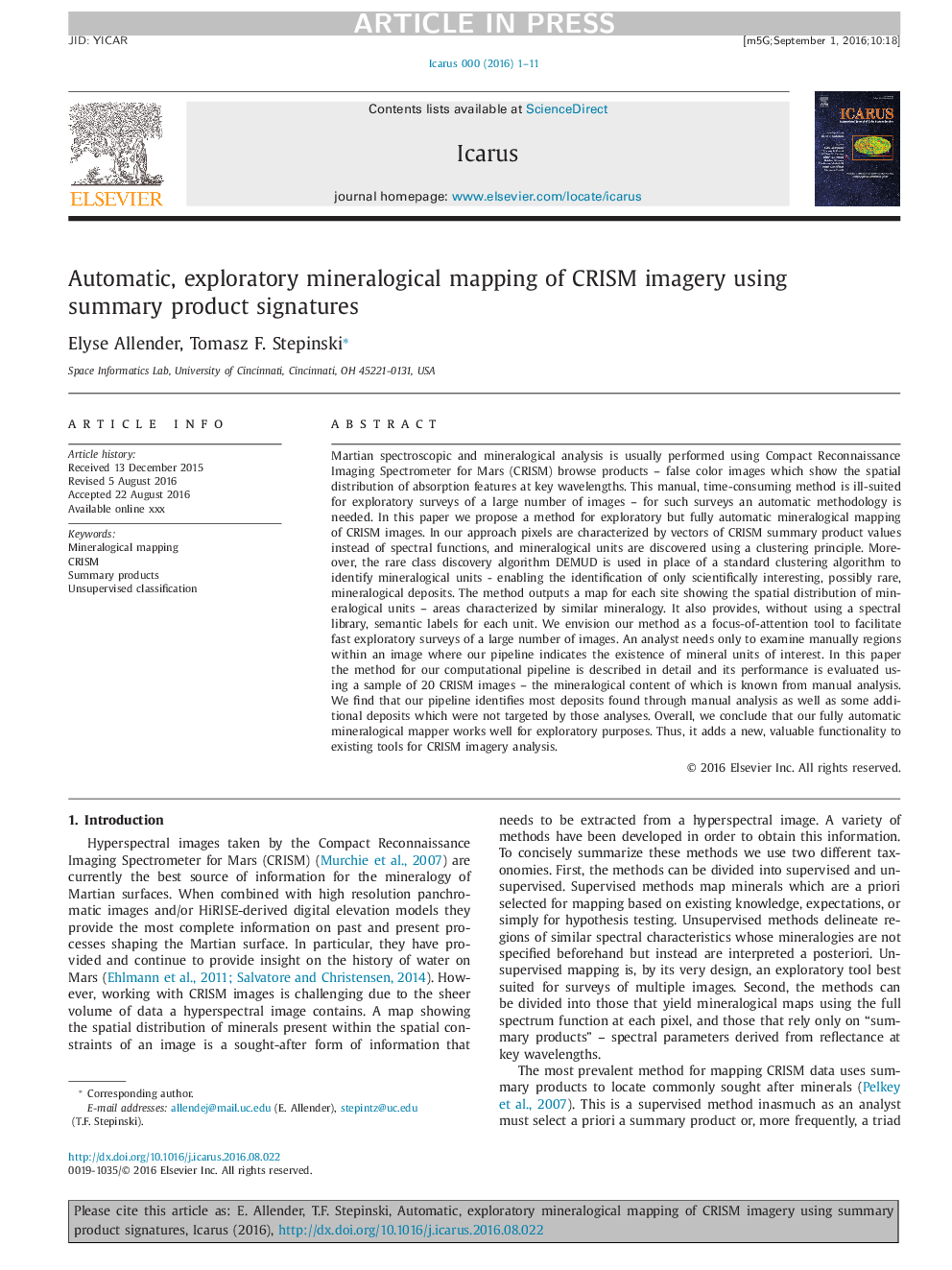| Article ID | Journal | Published Year | Pages | File Type |
|---|---|---|---|---|
| 5487310 | Icarus | 2017 | 11 Pages |
Abstract
Martian spectroscopic and mineralogical analysis is usually performed using Compact Reconnaissance Imaging Spectrometer for Mars (CRISM) browse products - false color images which show the spatial distribution of absorption features at key wavelengths. This manual, time-consuming method is ill-suited for exploratory surveys of a large number of images - for such surveys an automatic methodology is needed. In this paper we propose a method for exploratory but fully automatic mineralogical mapping of CRISM images. In our approach pixels are characterized by vectors of CRISM summary product values instead of spectral functions, and mineralogical units are discovered using a clustering principle. Moreover, the rare class discovery algorithm DEMUD is used in place of a standard clustering algorithm to identify mineralogical units - enabling the identification of only scientifically interesting, possibly rare, mineralogical deposits. The method outputs a map for each site showing the spatial distribution of mineralogical units - areas characterized by similar mineralogy. It also provides, without using a spectral library, semantic labels for each unit. We envision our method as a focus-of-attention tool to facilitate fast exploratory surveys of a large number of images. An analyst needs only to examine manually regions within an image where our pipeline indicates the existence of mineral units of interest. In this paper the method for our computational pipeline is described in detail and its performance is evaluated using a sample of 20 CRISM images - the mineralogical content of which is known from manual analysis. We find that our pipeline identifies most deposits found through manual analysis as well as some additional deposits which were not targeted by those analyses. Overall, we conclude that our fully automatic mineralogical mapper works well for exploratory purposes. Thus, it adds a new, valuable functionality to existing tools for CRISM imagery analysis.
Keywords
Related Topics
Physical Sciences and Engineering
Earth and Planetary Sciences
Space and Planetary Science
Authors
Elyse Allender, Tomasz F. Stepinski,
